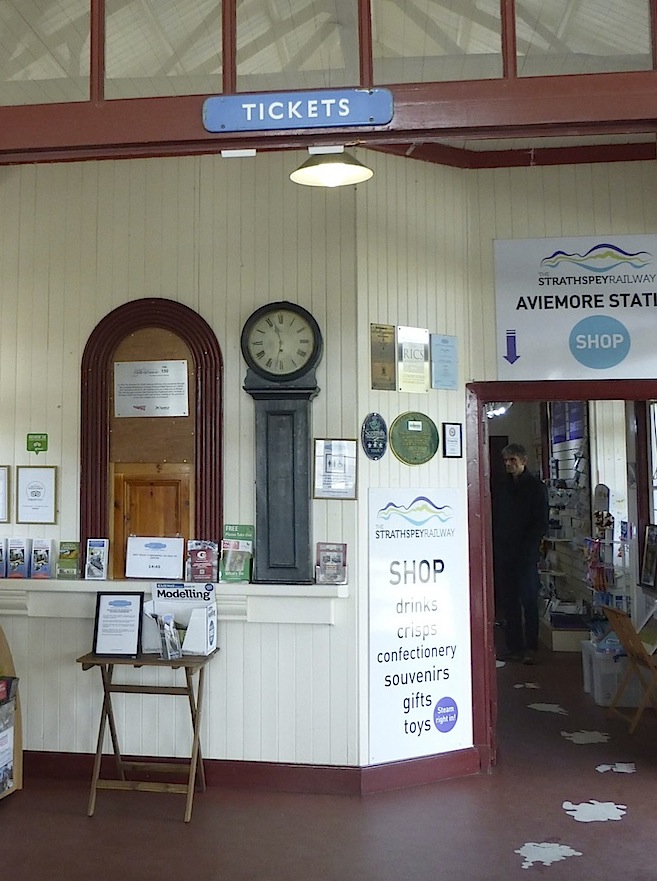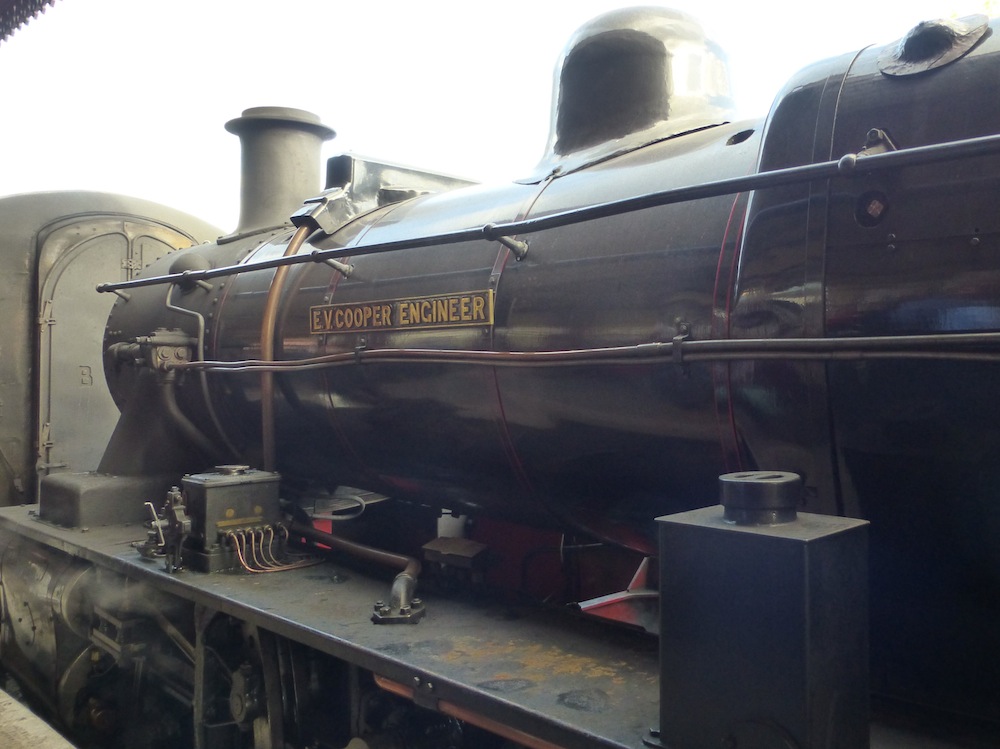The Highland Railway

A steam locomotive on the heritage Strathspey Railway coming round after Broomhill Station, to haul a waiting train back to Aviemore.
The Highland Railway, formed in 1865, was the result of a merger between the Inverness & Perth Junction Railway, opened in 1863, and the Inverness & Aberdeen Junction Railway, which had been fully opened in 1858 (see Fenwick and Geddes 10). It eventually stretched "from Perth to Wick, and Keith to Kyle of Lochalsh," and by the time it merged with with the London, Midland & Scottish Railway in 1923, it had become "the biggest employer in the region" (Sinclair 4).
Aviemore Station


Aviemore station. Left: from the outside. Right: from the footbridge over the tracks.
Aviemore lies just to the west of the Cairngorm mountains, in what is now designated as the Cairngorms National Park. A smart new railway station, replacing the original more basic one of the 1860s, was completed here in 1898, ready for the new direct line to Inverness which opened that year (see Sinclair 7). The station was designed by the railway's Engineer-in-Chief from 1898-1913, William Roberts, and restored to its previous Highland Railway condition in the late 1990s as part of the drive to attract more tourists to the Cairngorms. Indeed, its sheltered chalet-style platforms provide plenty of space for groups of holidaymakers bringing in luggage and, in the winter, cumbersome skiing equipment. ScotRail now uses two of the platforms here for its regular services, but there is also a third platform for the heritage Strathspey Railway, established in 1971 to bring part of the original Perth-Inverness route back to life after its closure. Its restored steam locomotives and stations provide a tourist attraction in themselves. Platform 3 can be seen to the right of the right-hand photograph above, behind the white picket fence. Simon Jenkins, who places Aviemore among the hundred best railway stations in Britain, declares the whole complex to be "an exemplary case of station rescue" (292).


Left: The delightfully Gothic end of Platform 1. Right: Platform 1.
The colour of the paintwork is described by Simon Jenkins as "Highland Railways' cinnamon and white" (292). This produces a fine contrast between the weatherboarding and window-frames, and latticework beneath them at the end of platform 1. The doors too become a feature, with a lighter contrasting shade picking out the panelling.




Left to right: (a) Close-up of ironwork at the end of Platform 1 (b) Another example of the decorative ironwork on the mainline platform. (c) The mainline train track on one side of the picket fence, with the entry to the Strathspey Railway platform to on the other (i.e. right side). (d) Ticket office and shop for the Strathspey Railway.
The detailing is superb — the delicate fretwork valences of the roof canopies, the flower motifs in the iron spandrels of the supporting columns, the equally decorative ironwork brackets against the station walls — everything has been designed with loving care, and to good effect. This carries through into the interior, that is, the offices, waiting rooms and small shop as well.


Right: The footbridge at Aviemore. Left: The ends of Platform 2 and the platform for the Strathspey Railway.
Although it is the standard lattice-girder design of the Highland Railway, Simon Jenkins has particular praise for the footbridge here, concluding his account of the station in this way: "Why do modern footbridges have to be so heavy and blundering when Aviemore's seems to float on air?" (292).



Left to right: (a) Luggage barrow at the far end of the Strathspey platform. (b) Waiting at the platform. (c) Steam locomotive preparing to haul the carriages.
The Strathspey Railway's heritage fleet, operating from Aviemore on part of the old Perth-Inverness route, is practically all early- to mid-twentieth century. The E. V. Cooper steam locomotive shown here dates from 1952, and is named after the engineer who headed the restoration team after its rescue from a scrapyard (see Sinclair 10).
Photographs, text and formatting by Jacqueline Banerjee. You may use these images without prior permission for any scholarly or educational purpose as long as you (1) credit the photographer and (2) link your document to this URL in a web document or to the Victorian Web in a print document.
Related Material
- Findhorn Viaduct
- Highland Railway (2): Boat of Garten Station
- Highland Railway (3): Broomhill Station
Bibliography
"Basic Biographical Details: William Roberts." Dictionary of Scottish Architects (DSA). Web. 8 January 2018.
Fenwick, Keith, and Howard Geddes. The Highland Railway. Stroud, Glos.: The History Press, 2009.
Jenkins, Simon. Britain's 100 Best Railway Stations. London: Penguin, 2017.
Sinclair, Neil T. Strathspey Railway Guide Book. Eighth rev. ed. Aviemore: Strathspey Railway Co., 2014.
Strathspey Railway. Web. 8 January 2018.
Strathspey Railway: Aviemore - Boat of Garten - Broomhill (2017 timetable and information). Available at the station.
Created 6 January 2018